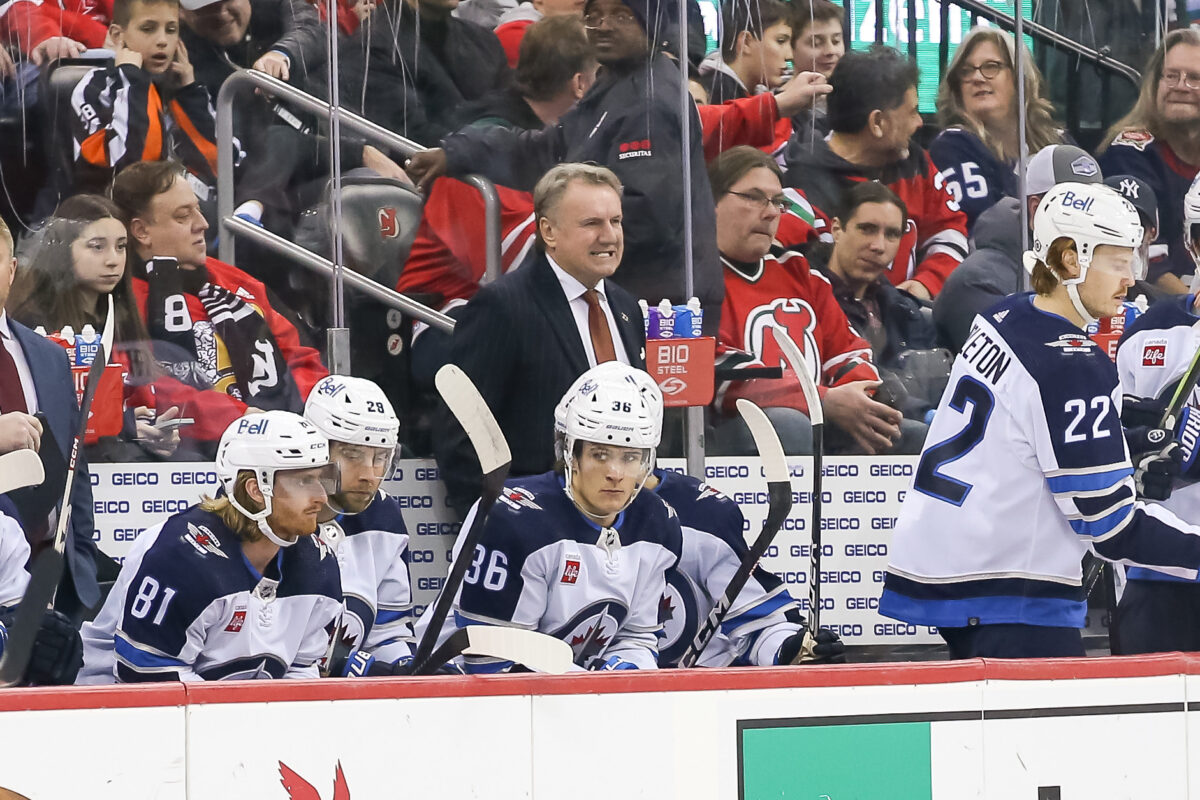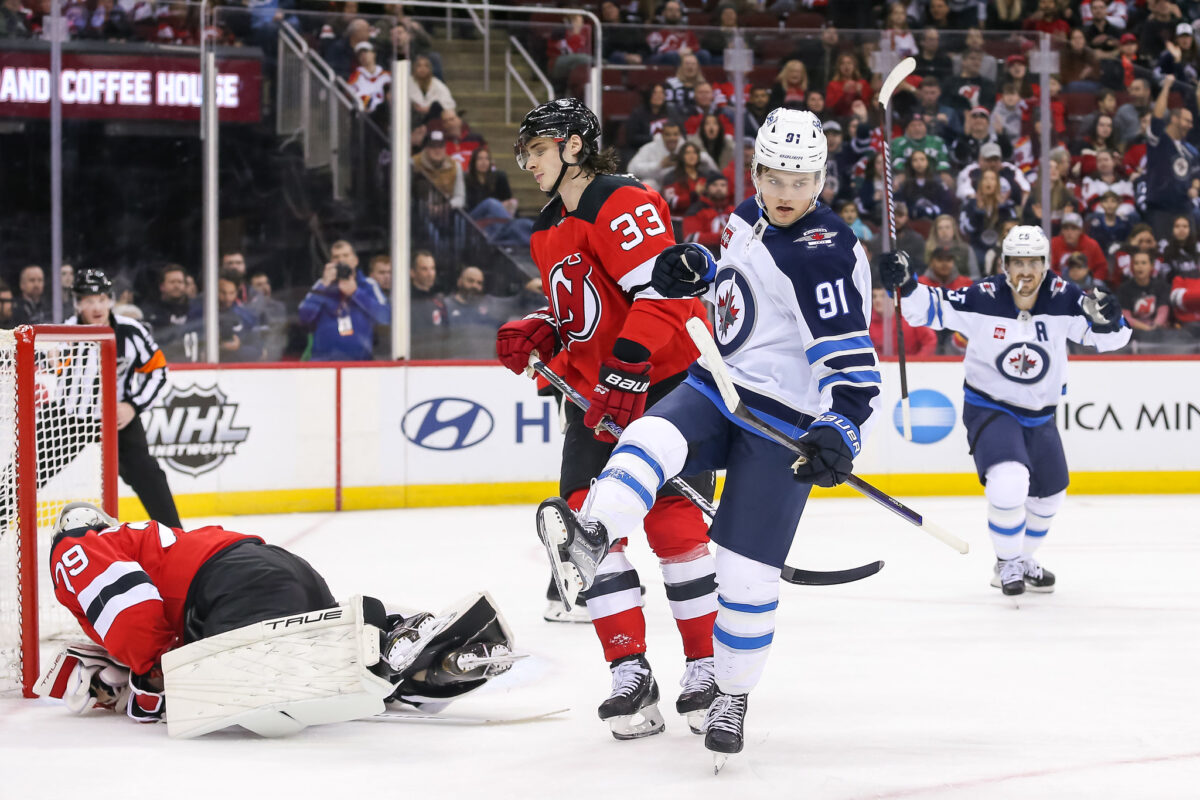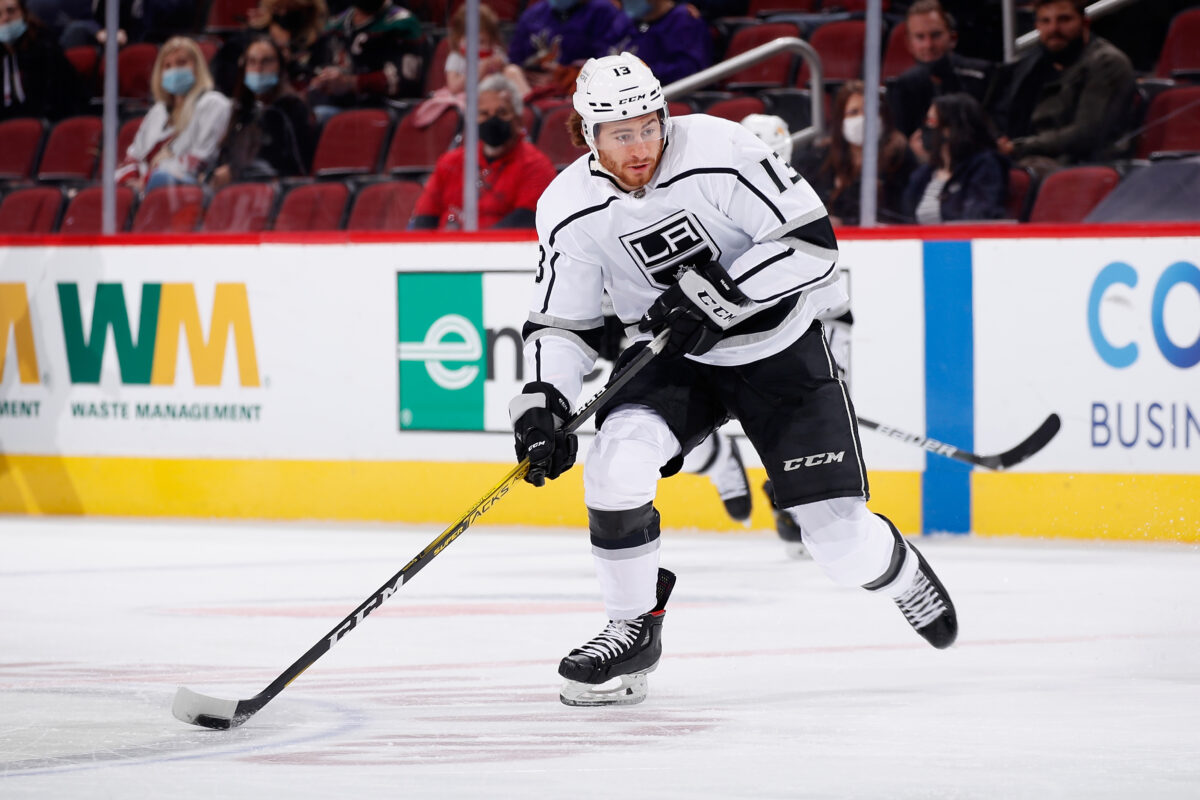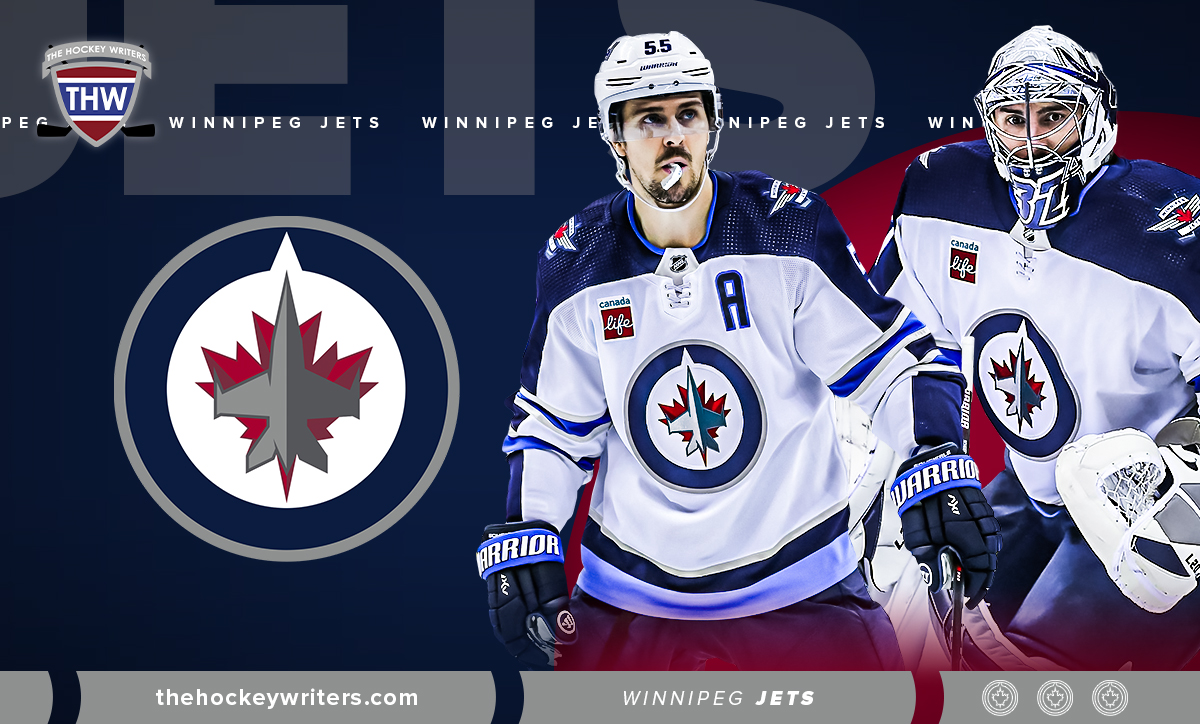Winnipeg Jets head coach Rick Bowness will enter the 2023-24 season — his second at the helm — facing a number of challenges. Some are the same as the ones he faced last season after coming aboard, while others are new.

Here, we’ll take a look at just three of the challenges he’ll grapple with.
1: Get the Team to Listen to Him for a Whole Season
This is the big one that will ultimately dictate if the Jets can get out of the mushy middle.
The Jets initially responded to their experienced new coach’s message and systems last season, and it served them well as they exceeded expectations and sat atop the Central Division and even the Western Conference at points in January. The players were pulling in the same direction and the leadership core was walking the walk.
However, just when it seemed the longstanding culture and character issues were finally solved, the legendarily-hardheaded group — largely the same group that caused Paul Maurice to resign in frustration a season prior — reverted back to their old ways.

From mid-January onward, they decided that what Bowness wanted them to do — primarily, be sound defensively and exert effort in all zones — was simply way too hard. The majority of the team tuned him out and no matter how much paint he peeled off the walls, how many challenges he issued publicly, or who he benched, he could not break through their stubbornness. Doing their own thing caused the Jets to tumble down the standings, almost miss the playoffs, and lose in the first round in five games.
The Jets’ reversion back to the mediocre status-quo was all the more frustrating considering they knew playing Bowness’ way led to success but just didn’t have enough strength of character or motivation after a while to keep doing it. A leadership change and a key deletion may help Bowness ensure his message doesn’t fall stale again by the new year.
Adam Lowry was appointed the new captain earlier this month, and he is a highly-respected veteran who leads by example and does whatever it takes to win. The 30-year-old has been long considered a strong voice in the locker room, and if the gritty power forward can’t get the team to go to war with him, no one can.
Lowry’s attitude and approach to the captaincy should be a sharp contrast to Blake Wheeler’s. Wheeler, captain for six seasons, admitted last September the responsibilities of being a captain became a burden, and it was clear he didn’t have a leader’s personality or disposition. Bowness tried to usher in a changing of the guard by stripping Wheeler of the C, but it didn’t work: after the season, many players expressed they still viewed Wheeler as the boss.
Related: Jets Make Right Choice Naming Lowry Captain
Wheeler’s influence has finally been removed as he was bought out of the final year of his bloated contract on June 30 and a day later, signed a one-year deal with the New York Rangers. This certainly looks to be a case of addition by subtraction and should empower Lowry to lead his way.
It’s not all on Lowry’s shoulders, though: Bowness needs to keep calling spades spades and being the hard driver that is part of his personal brand and one of the reasons he’s been coaching since the 1980s. If someone needs to be called out, benched for a period, sat for a game, or even sent down for a spell, he should not hesitate. Coddling this group will get him nowhere.
2: Figure Out the Second-Line Centre Situation
The Jets have just one second-line centre slot, but three potential candidates to fill it. Figuring out who best for this key role is a good challenge for Bowness to have, but a challenge nonetheless.
Two candidates are young players the organization holds in high regard in Cole Perfetti and Gabriel Vilardi. Perfetti is still the Jets’ top prospect two injury-filled years removed from being drafted 10th overall in 2021, while Vilardi is the key piece from the Los Angeles Kings in the return for Pierre-Luc Dubois.
Related: Winnipeg Jets Lineup Battles to Watch for in 2023-24
Both players appear on the cusp of breakouts. Perfetti is an exceptional playmaker with game-breaking skills, while Vilardi has a shoot-first mentality that allowed him to score a career-high 23 goals last season and possesses size similar to Dubois’ at 6-foot-3, 215 pounds.

There are complications, though, in appointing either with the role, primarily that neither have played a ton of centre. Perfetti recorded 30 points (eight goals and 22 assists) in 51 games in a top six role last season, but it was on the wing. Vilardi, too, played primarily right wing for the Kings last season, recording 41 points (23 goals, 18 assists) in a third-line role. It’s not uncommon for teams to deploy promising young offensive players on the wing, as it has less responsibility than centre and allows them to get used to the speed and demands of the pro game.
That being said, Vilardi has much more experience in the dot. He has taken 970-career faceoffs in his four-season career, winning 46.0 per cent of them, while Perfetti has taken just 14-career draws over his two seasons, winning 21.4 of them. Vilardi may have the inside track for that reason alone.
There are questions about both players’ durability. Perfetti missed 31 games with two separate injuries last season and also the final three months of his rookie 2021-22 campaign; he has played just 69 games as a result. Vilardi missed 18 games due to injury last season and played just 25 games in 2021-22.

Perfetti recently said he knows there’s going to be more opportunity and understands he needs to work “extra hard.”
“I feel comfortable in the middle of the ice. I think there’s a lot of positives that come from playing in the middle,” he told the Winnipeg Free Press last month. “There’s a lot more responsibility and all that stuff, but I think your game can really take another step.
I’m happy to play either spot,” he continued. “I think any line combo, any mixing and matching is going to work out well.” (From “Perfetti ready to pounce,’Winnipeg Free Press, Aug. 17, 2023.)
Vilardi just signed a two-year bridge deal in July and Perfetti has one year left on his entry-level contract but will be a restricted free agent next summer. Both should get looks there in preseason, but there’s no need for Bowness to shoehorn either into the role too quickly, despite their potential and obvious upsides.
That’s where Vladislav Namestnikov may come into the equation. The veteran was re-signed to a two-year deal on July 1 and may represent the safe option to start the season, if not the most exciting. Originally acquired at the 2023 Trade Deadline from the San Jose Sharks for the modest price of a fourth-round pick, the 30 year old performed above expectations while proving his versatility.

The Russian product — usually a bottom-six player —took a larger role than expected down the stretch by centering the second line between Nikolaj Ehlers and Blake Wheeler and helped the Jets avoid being the first team in NHL history to lead a conference more than halfway through the season but miss the playoffs. Overall, he recorded 10 points (two goals, eight assists) in 20 regular season games and two assists in five playoff games.
Bowness could start with Namestnikov as his second-line centre, or give the role to Perfetti or Vilardi knowing he has Namestnikov as an insurance policy against struggles or injury.
3: Stay in “Win-Now” Mode While Preparing For Potential Loss of Talent
Bowness — who agreed to stay on for another season despite all of his maiden campaign’s frustrations — may have thought 2023-24 would see him overseeing the beginning of a rebuild, or at least a significant retool.
Neither happened, and the Jets remain in win-now mode. The first sign that general manager Kevin Cheveldayoff wasn’t going to blow it all up was that when he traded the disgruntled Dubois in June, he demanded NHL-calibre players in return instead of draft picks prospects. That ask shut the Montreal Canadiens — long considered frontrunners for Dubois’ services — out of the picture and Cheveldayoff got NHL-calibre talents in Alex Iafallo, Rasmus Kupari, and Vilardi from the Kings instead.
An offseason that seemed poised to bring a ton of change ultimately brought very little. Most notably, Cheveldayoff didn’t trade Connor Hellebuyck or Mark Scheifele despite them both being in the final years of their contracts and unrestricted free agents next summer.
“What I stressed to their representatives, what I stressed to Mark, and I’ll do the same with Connor when I see him, is we’re here to win. We’ll take the contract side of things and we’ll put it off to the side here,” Cheveldayoff said recently.

“We’ll have whatever discussions we need to have, or can have, or will have, but the focus is winning,” Cheveldayoff continued. “We made the (Dubois) trade with the premise in mind that we were going to add some good players to our lineup, and give us some depth and dimension I think in the choices the coaches have. But make no question about it, we’re trying to win.” (From ‘Chevy standing pat, for now,’ Winnipeg Free Press, Sept. 12, 2023.)
Related: Winnipeg Jets 2023 Offseason Overview
While Bowness will start the season with both stars, he has to prepare for a near future without them. Cheveldayoff simply cannot allow them to walk for nothing in the offseason — that would be a profound failure of asset management — so if the Jets are not in the playoff picture as the March 8, 2024 Trade Deadline approaches, the GM could and should deal both.
Hellebuyck and Scheifele’s departures would leave Bowness with two massive holes, and even if the games down the stretch aren’t meaningful for a playoff push, they’ll be meaningful to assess what younger players can do either on the top line or in the crease. Bowness would be well-served to prepare a contingency plan to carry out if and when those trades go down.